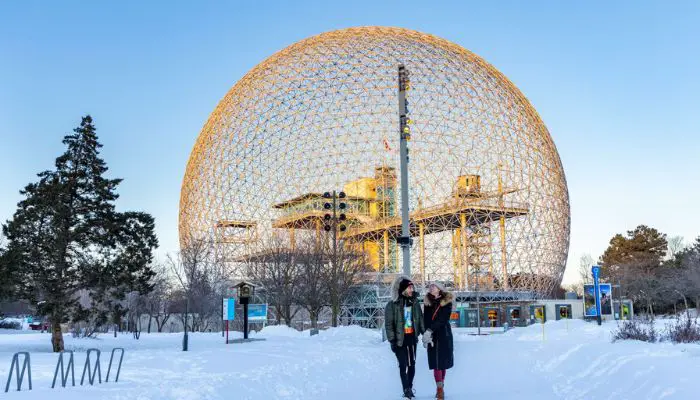Located as it is on the St. Lawrence, Montréal has prospered as a cosmopolitan centre of communications and trade. Although Jacques Cartier arrived here in 1535 and claimed the region for his King, François I of France, Ville Marie de Mont-Réal was not established here by Paul de Chomedey until 1642.
Today, Montréal, the second-largest French-speaking metropolis in the world, is a remnant of this initial community. Things To Do In Montreal. Despite Montreal’s vastness, the tourist-attractive areas are located in relatively small districts.
The Centre-Ville (downtown) neighbourhood is home to many important museums and art galleries, as well as Rue Sherbrooke, arguably the city’s most opulent boulevard. Numerous museums and other organisations are situated there, making it the hub of the city.
The Pointe-à-Callière museum has the ancient foundations and streets of the city’s original site, Vieux-Montreal. Due to its historic structures, this area of the city is the most gorgeous. It served as the centre of the colonial town. The majority of the historic sites are located here, along with the well-liked waterfront promenade along the Vieux-Port (Old Port).
10 Tourist Attractions And Things To Do In Montreal
Although The Plateau is the centre of Montreal’s French-speaking community, fewer visitors visit there. Because of its upscale stores, eateries, and sidewalk cafes, walking down Rue St. Denis frequently gives the impression that one is in Paris. Here, along Rue St.
Denis and elsewhere in this district that was largely shaped by successive waves of immigrants, are some of the city’s most well-known eateries. Mile End, a small cluster of streets with particularly Italian, Portuguese, or Greek atmospheres, is located on its far extremity.
With our list of the top attractions and things to do in Montreal, you can learn more about the greatest locations to visit in this diverse city.
1. Wander through Old Montreal (Vieux-Montréal)
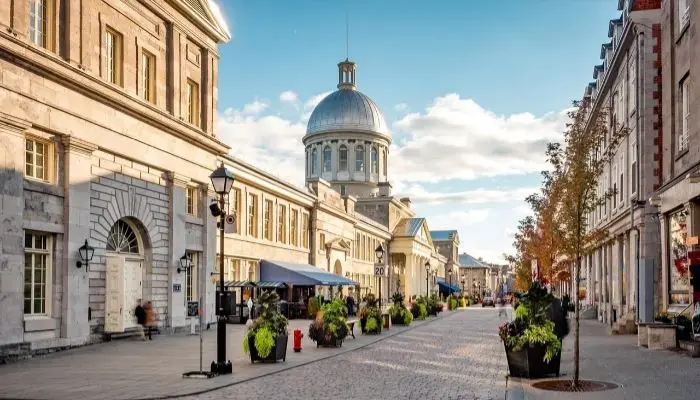
The tourist heart of Montréal is Old Montréal. The region has the charming atmosphere of a Parisian quarter and is home to a great concentration of structures from the 17th, 18th, and 19th centuries. Today, several of these old structures serve as inns, eateries, galleries, and gift shops. This is the greatest place to stay if you want to use the city as a base for a few days of sightseeing.
You may easily explore the city’s numerous historic sites, streets, and landmarks by foot. The Notre-Dame Basilica, strolling down Rue Saint-Paul, exploring Bonsecours Market, and taking in the open-air meeting area of Place Jacques-Cartier are just a few of the numerous things to do in this city. The enormous Ferris wheel on the waterfront offers a little urban fun.
2. Explore the Old Port (Vieux-Port)
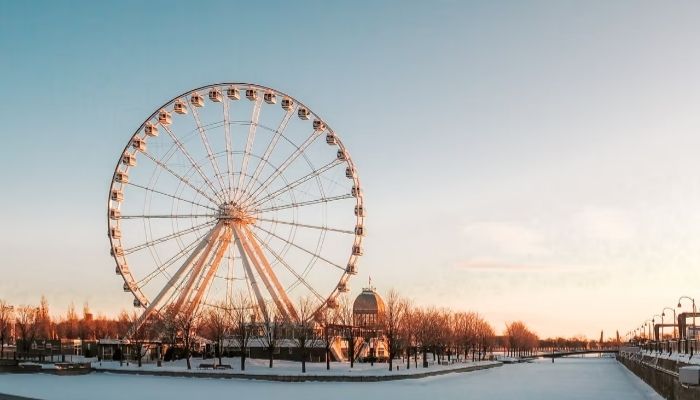
You’ll likely find yourself in the bustling Old Port neighbourhood near the Saint Lawrence River while you explore Old Montreal (Vieux-Port). You can do a lot of fun things here, like ride the enormous Ferris wheel or climb the well-known clock tower, or you may scream your way down a zipline that crosses wide expanses of water from terrifying heights.
The area’s ten unique public art installations can be viewed while strolling around; alternatively, you can watch a performance at the IMAX or brush up on your knowledge at the Montreal Science Center. Grab a coffee, sit on one of the sunny terraces, and take it all in if even those options sound tiresome.
Boat trips leave from these docks during the summer. There is even a man-made beach with views of the city or the river at the base of the clocktower if you really want to soak up the sun. Put on your skates and spin about on the sizable ice rink in the winter.
3. See the View from Mont-Royal
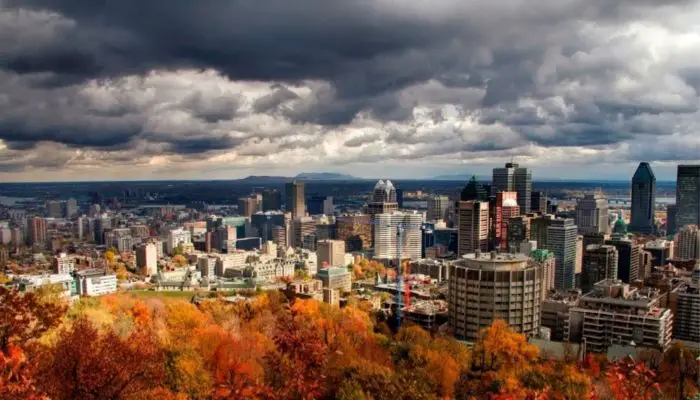
Being the green lung close to the city centre, Mont-Royal stands 233 metres above the metropolis. While strolling through this gorgeous park, one can observe memorials to Jacques Cartier and King George VI, spend time by Lac-aux-Castors, and take in the cemetery on the western slope where the city’s various ethnic communities have long since interred their dead in harmony.
A superb view of the entire 51-kilometer length of the Île de Montréal and the St. Lawrence may be seen from the peak, or more precisely from a platform below the cross. The Adirondack Mountains in the United States of America can be seen on clear days.
4. Jardin Botanique (Botanical Garden)
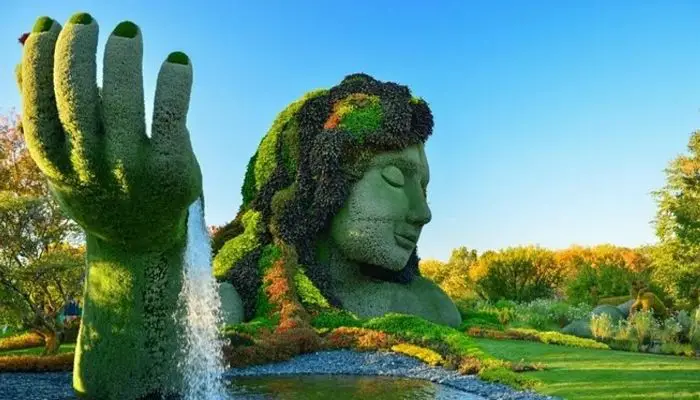
Montreal’s brilliantly inventive floral garden is located high above the city in Parc Maisonneuve (Pie IX Metro), which was the venue of the 1976 Summer Olympic Games. A broad variety of climates are represented by the various plants, which are grown in 30 themed gardens and 10 show greenhouses. Aside from the stunning Japanese and Chinese gardens, there are also outdoor spaces dedicated to alpine, aquatic, medicinal, utilitarian, and even deadly plants.
The rose displays are breathtaking, and a garden featuring flora that First Nations peoples grow or utilise is very fascinating. A tropical rain forest, ferns, orchids, bonsai, bromeliads, and penjings can all be found in towering greenhouses (miniature Chinese trees). On the grounds, there is also a sizable arboretum and an intriguing insectarium.
5. Notre-Dame Basilica

The 1656-founded Notre-Dame Basilica in Montréal is the city’s oldest church and is now much larger than it was. The neo-Gothic façade’s twin towers face Place d’Armes. Victor Bourgeau created the complex and opulent interior.
The 7,000-pipe organ built by the Casavant Frères company, the magnificently carved pulpit by artist Louis-Philippe Hébert (1850–1917), and the stained-glass windows depicting events from Montreal’s inception are highlights. A 20-minute tour is included in the basilica admission fee, but you may also take a one-hour tour for more historical context and access to the second balcony and the crypt.
6. Oratoire Saint-Joseph (St. Joseph’s Oratory)
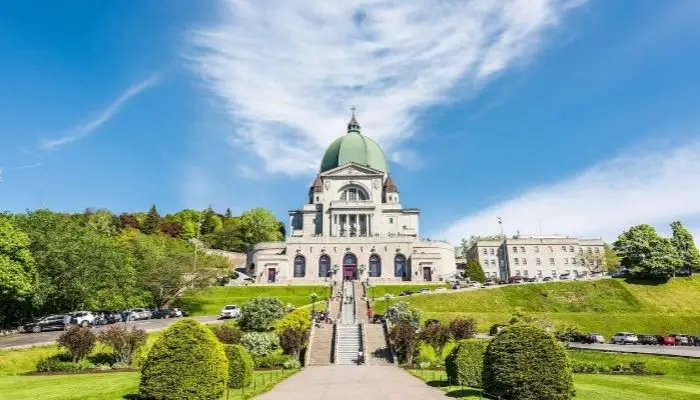
The patron saint of Canada is honoured in the Oratoire Saint-Joseph, which is close to Mount Royal Park’s western entrance. With its massive 1924 Renaissance-style domed basilica, it is a holy site for pilgrims.
In 1904, Brother André of the Congrégation de Sainte-Croix had already constructed a modest chapel nearby, where he carried out healing miracles that led to his canonization in 1982. In the original chapel, his tomb is located in one of the sanctuary areas.
In a separate chapel, votive offerings are on display. Behind the chapel, a cloister provides access to Mont-Royal. The observatory offers a nice northwest view of Montréal and Lac Saint-Louis.
7. Parc Jean Drapeau
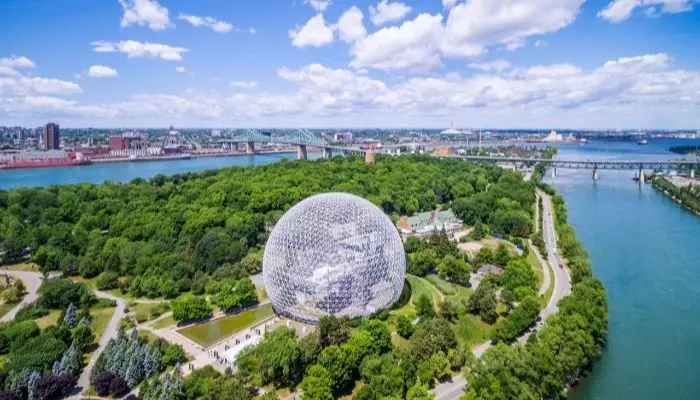
Expo ’67 was held on Île Sainte-Hélène, which was named for Samuel de Champlain’s wife, and on the man-made island of Notre-Dame. They currently go by the name Parc Jean-Drapeau and provide a lot of family-friendly attractions.
The Biosphere, a relic of the 1967 world’s fair, is now a museum devoted to environmental concerns. The building, which is the largest of its kind in the world, is shaped like a sphere. Other tourist attractions on the islands include La Ronde Amusement Park’s rides and games, the Stewart Museum’s historic 1820 British arsenal, Bassin Olympique (the venue for the Olympic rowing competitions), and the Circuit Gilles Villeneuve racetrack.
8. Musée des Beaux Arts (Fine Arts Museum)
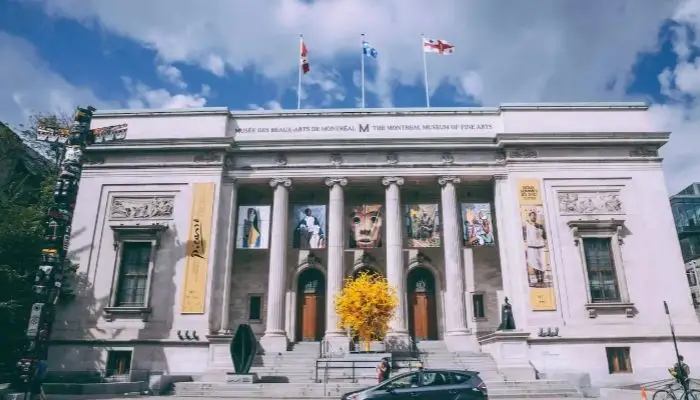
The oldest museum in Canada, the Musée des Beaux Arts, has a sizable collection of works in painting, sculpture, and new media. Nearly 10,000 artefacts make up its great collections of world cultures and Mediterranean archaeology, and it also has outstanding holdings of North and South American, African, Asian, and Islamic art.
The collection of more than 1,400 paintings, sculptures, sketches, and prints is especially strong in works from the Dutch Golden Age and features masterpieces by Pieter Bruegel the Younger, Canaletto, El Greco, Gainsborough, Goya, Mantegna, Poussin, Rembrandt, Tiepolo, and Veronese.
With pieces by Cézanne, Dali, Miró, Monet, Derain, Kandinsky, Matisse, Picasso, Rodin, Otto Dix, and other significant painters, the collections extend through the Realists and Impressionists to modern art.
9. Pointe-à-Callière
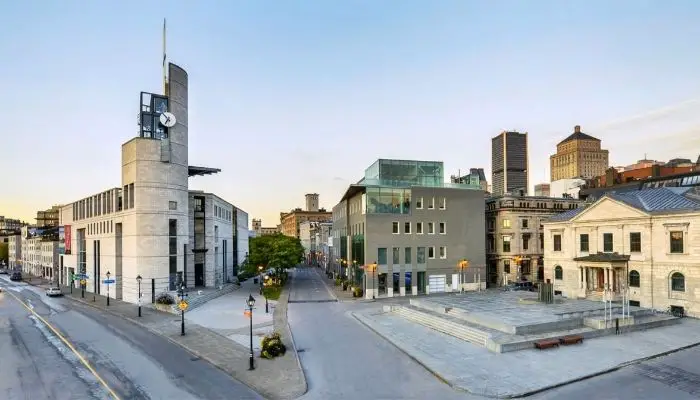
The Pointe-à-Callière, which is today distinguished by a spectacular modern structure housing a museum of archaeology and history, is located at one corner of Place Royale in Old Montreal. Place Royale, where the market and parade field existed until newer government buildings removed them, was the hub of life in Montréal’s early and colonial days.
However, beneath present-day Montréal, there are still traces of these earlier streets and foundations, which you can examine during a trip to the museum.
You can wander amid the old stone-paved streets, drainage ditches, and ground floors of buildings from the 17th century as you travel through the city’s past underneath. As you move through the museum, the narrative is revealed in layers of history through relics, maps, and exhibitions.
10. Place des Arts
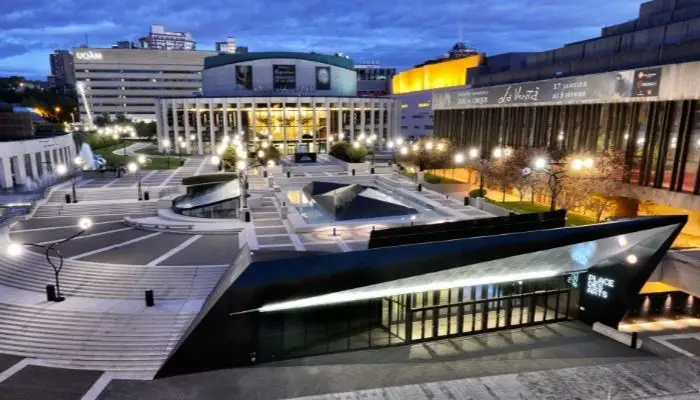
The Place des Arts is Canada’s largest complex of its sort, with a whole area devoted to the visual and performing arts. The Montreal Symphony Orchestra, Les Grands Ballets Canadiens, and the Opéra de Montréal all call this place home. The many stages and rehearsal halls here serve as settings for a wide variety of theatre, music, dance, films, and events.
These surround a sizable esplanade that is adorned with artwork, fountains, and water falls and is a well-liked location for events. The most significant of these is the yearly Festival International de Jazz de Montréal, which takes place in late June or early July and draws visitors from all over the world as well as some of the most well-known jazz musicians.

